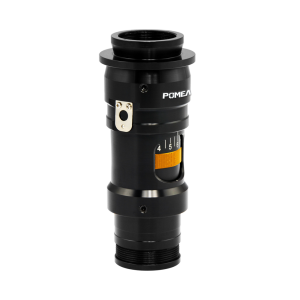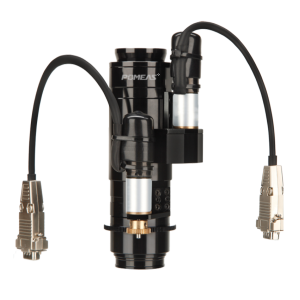In the field of machine vision, the choice of lens plays a key role in image quality and system performance. There are many differences in structural design and performance between dual-guide zoom lenses and normal zoom lenses.
Principle of normal zoom lens


Ordinary zoom lenses usually use a more traditional mechanical structure. Its internal optical lens group relies on a single set of rails or a simple mechanical linkage to realize the zoom operation. This structure is relatively simple, the lens group moves along a single guide rail during the doubling process, and the focal length is adjusted by changing the relative position of the lenses, thus realizing different magnifications of enlargement or reduction.
Double rail zoom lens principle


The dual-guide zoom lens utilizes a more precise and complex dual-guide design. The internal optics are guided by two separate guide rails. During the doubling process, the different lens groups can move in concert along their respective guide rails according to the designed doubling curve. This dual-guide structure allows for more precise control of lens displacement and angle, ensuring good optical performance throughout the entire zoom range.
Optical performance comparison:
- Ordinary zoom lens: During the zoom process, due to the limitation of the single-guide structure, the movement of the lens group may not be smooth and precise enough, which is prone to problems such as optical axis shift and tilting of the image plane. Especially at high magnification, these problems will lead to a decrease in the clarity of the image edges and an increase in distortion, affecting the accuracy and stability of imaging.
- Dual-guide zoom lens: With the precision guidance of the dual-guide, the optical axis shift and image plane tilt phenomenon can be effectively avoided. It can maintain high resolution and low aberration rate throughout the zoom interval, with better consistency between the center and edge sharpness of the image, providing reliable imaging guarantee for high-precision visual inspection and measurement tasks.
Comparison of zoom stability:
- Ordinary zoom lens: Its zoom operation relies on simple mechanical structure, after long time use or frequent zoom, it is easy to lose zoom accuracy due to mechanical wear, loosening, etc., and the zoom process may appear unstable phenomena such as stuttering, jumping, etc., which affects the system's continuous working performance.
- Dual-rail zoom lens: The dual-rail structure has higher mechanical stability, and the fit between the rail and the lens group has been precisely designed and processed. This enables the lens to maintain stable and reliable performance under frequent zoom operations, and the zoom process is smooth and fluent without obvious stuttering or jumping, which is able to adapt to the visual application needs in long-time, high-intensity industrial production environments.
Durability Comparison:
- Ordinary zoom lens: Due to the relatively simple structure, when facing complex working environments, such as high temperature, high humidity, high dust and other conditions, the single guide rails and related mechanical components are more susceptible to erosion and damage, thus affecting the service life of the lens and the reliability of its performance.
- Dual-guide zoom lens: Its dual-guide structure and overall precision design make the lens have better sealing and anti-interference. In harsh environments, it can better protect the internal optical lens group and mechanical components, reduce the impact of external factors on the performance of the lens, thus having a longer service life and higher reliability, reducing the maintenance costs and replacement frequency of equipment.
Product recommendation
TECHNICAL SOLUTION
MORE+You may also be interested in the following information
FREE CONSULTING SERVICE
Let’s help you to find the right solution for your project!


 ASK POMEAS
ASK POMEAS  PRICE INQUIRY
PRICE INQUIRY  REQUEST DEMO/TEST
REQUEST DEMO/TEST  FREE TRIAL UNIT
FREE TRIAL UNIT  ACCURATE SELECTION
ACCURATE SELECTION  ADDRESS
ADDRESS Tel:+ 86-0769-2266 0867
Tel:+ 86-0769-2266 0867 Fax:+ 86-0769-2266 0867
Fax:+ 86-0769-2266 0867 E-mail:marketing@pomeas.com
E-mail:marketing@pomeas.com
